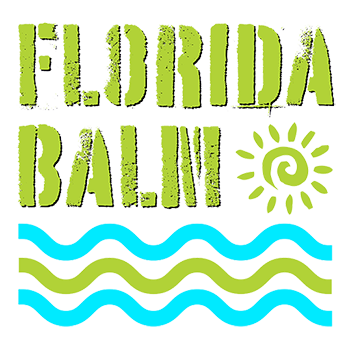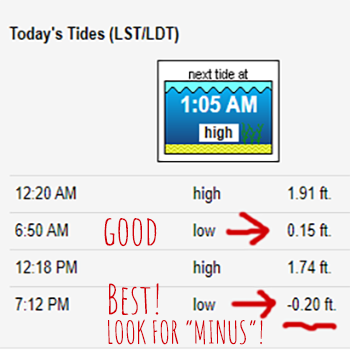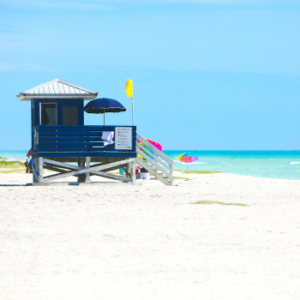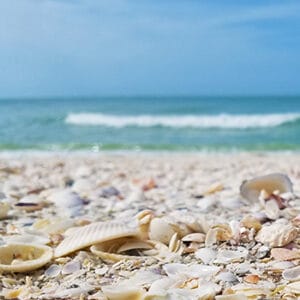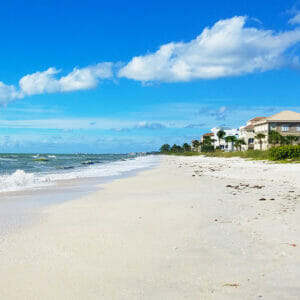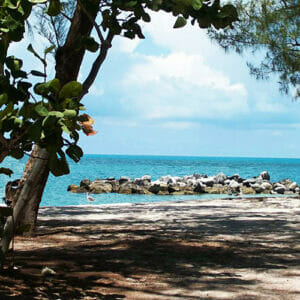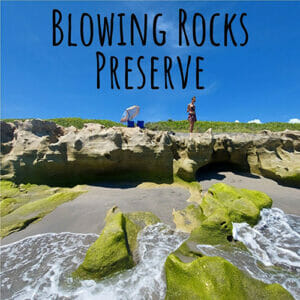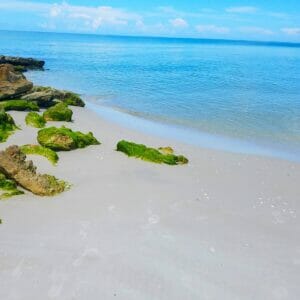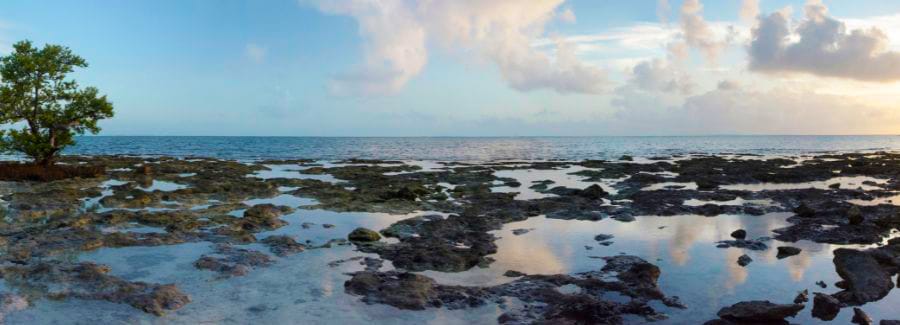
Finding Tide Pools in Florida
Tide pools in Florida are a window into a fascinating world teeming with marine life. These rocky pockets and crevices, exposed during low tide, offer a glimpse into a fascinating miniature ecosystem. Finding these tiny tidal havens and observing all the life inside it is a challenge and adventure!
Tidepooling in Florida is becoming increasingly popular for good reason, and is perfect for:
- Nature enthusiasts: Get up close and personal with a variety of incredible marine creatures in their natural habitat.
- Curious minds: Discover the wonders of marine biology and Florida’s unique geology, which plays a key role in creating these amazing tide pools.
- Kids: Tidepooling is an interactive learning experience that ignites a love for nature and exploration. Spotting and identifying different marine life in these tiny habitats is an unforgettable adventure!
Let’s talk about the two types of tidal pools in Florida, where to go to find these tide pools and strategies for finding and observing them, and what types of marine species you’re likely to find!
Table of Contents
- Finding Tide Pools in Florida: a Challenge and Adventure
- What are Florida Tide Pools and Why We Love “Tidepooling”
- Two Types of Tidal Pools in Florida
- Florida’s Natural Rocky Shorelines
- Florida’s Rocky Beach Groins
- Where to Find Florida’s Tide Pools
- Suggested Spots to Explore for Florida’s Natural Tide Pools
- Strategy for Finding the Perfect Tidal Pools
- Marine Life Species to Look Out For
- FAQ: Frequently Asked Questions About Florida’s Tide Pools
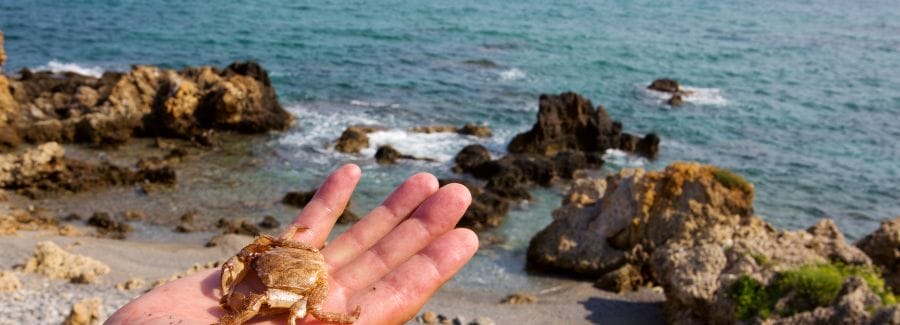
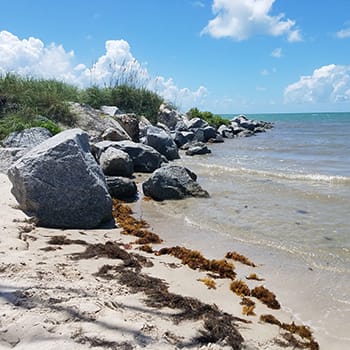
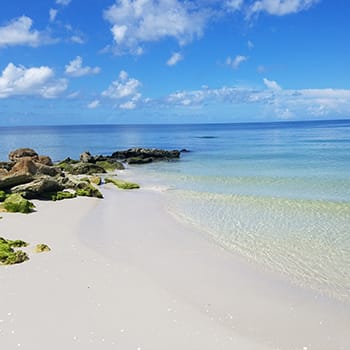
See the difference in rocks between these photos (above)? One is natural rocky beach developed over thousands of years, the others are man-made.
Two Types of Tidal Pools in Florida
Believe it or not, there are actually two main types of tide pools in Florida, and most people looking for them don’t usually realize it!
Natural Tide Pools
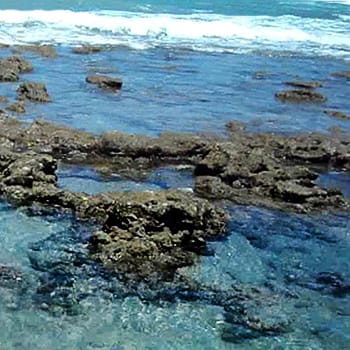
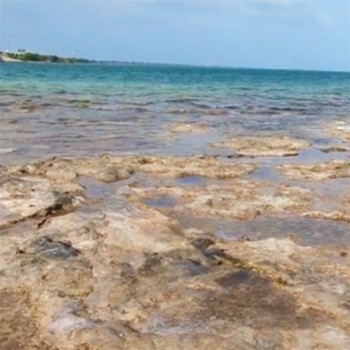
Natural tide pools are found amidst Florida’s rocky beaches and shorelines, which are typically not the best known and popular beaches.
The rock formations found in certain areas are the result of millions of years of compressed seashells and coral skeletons. And in the case of Florida’s most northern rocky beach, Blackrock beach, the rock is actually hardened soil called spodosol.
The relentless wind and waves have sculpted these rocks over time, creating cracks and crevices that fill with water during high tide, forming the tide pools we love to explore.
Here’s the catch: a century ago, Florida’s coastline likely had many more of these rocky shorelines. But as the focus shifted towards beautiful sandy beaches, some of these areas were covered with sand or even bulldozed away for development.
The good news? There are still some hidden gems out there! These natural rocky shorelines with tide pools are a bit more challenging to find, making your exploration a true adventure.
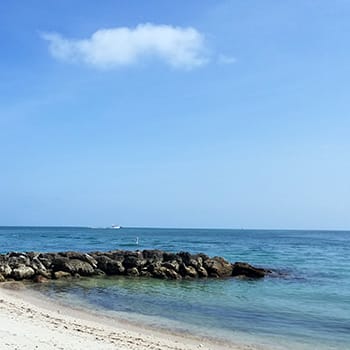
Florida's Rocky Beach Groins
Most public beaches in Florida use large rock structures called beach groins to protect the shoreline and sand from erosion.
These groins are essentially rocky walls built perpendicular to the shoreline and jut out into the water. They are usually made by placing large boulders in a line from the beach down into the water, the adding medium and small rocks scattered around them.
The spaces in between these rocks can sometimes create shallow pools during low tide where small marine life remains. Many people consider these tide pools.
While not technically the same as the natural tide pools formed by erosion in thousands of years old natural rock, these beach groins can still be great places to find a variety of interesting marine life.

Where to Find Florida's Tide Pools
Now that we’ve explored the two main types, let’s get down to the fun part – finding these hidden treasures!
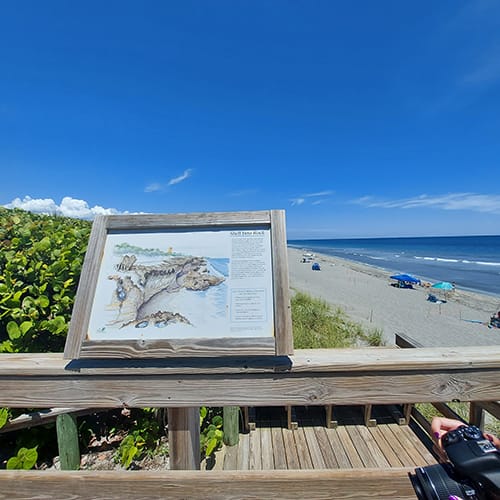
Suggested Spots to Explore for Florida's Natural Tide Pools
Here are some locations known for their natural rocky shorelines. These are the perfect spots to look for tidal pools during low tide.
- Blackrock Beach at Big Talbot Island in Jacksonville
- Blowing Rocks Preserve in Jupiter
- Coral Cove Beach in Tequesta
- Washington Oaks Gardens State Park in Palm Coast
- Chastain Beach on Hutchinson Island
- Bahia Honda in the Florida Keys
- Ohio Key in the Florida Keys
- Key West
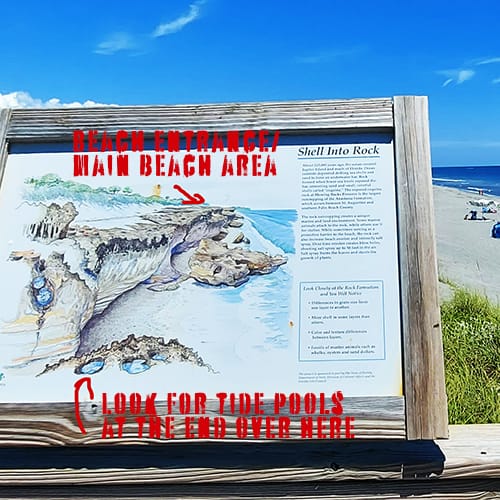
Signage at Blowing Rocks Preserve shows tidal pools towards the end of the rock formations, what a fun beach to explore! As you enter onto the beach area after the boardwalk trail… you can go left to the sandy beach area or right where the amazing natural rock formations are. Keep going down towards the end where there are some tidal pools at low tide to check out!
Note: While Norriego Point Beach in Destin boasts about their “tide pools,” I only saw rocky beach groins during my visit. It’s still a beautiful beach, but keep in mind you might be looking for the natural tide pools a little longer!
The majority of larger, popular public beaches use rocky beach groins. They start on the beach and extend well into the water.
This means no matter if it’s high tide or low tide, most of these groins will have some “pools” in between the rocks where you might see some marine life.
Strategy for Finding Natural Tidal Pools
Finding natural tidal pools with marine life to observe requires a little planning:
- Timing is critical: Check the NOAA tide predictions chart and plan to be at your location about an hour before the low tide. The lower the tide, the better!
- Research is your friend: Bring a field guide or book with photos of Florida marine life to help you identify the creatures you’ll find!
- Be adventurous: Don’t be afraid to explore! Sometimes the best tide pools are hidden gems waiting to be discovered and not the popular public beaches where everyone’s at!
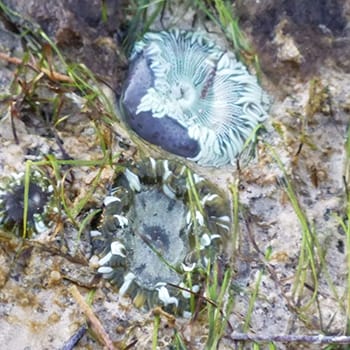
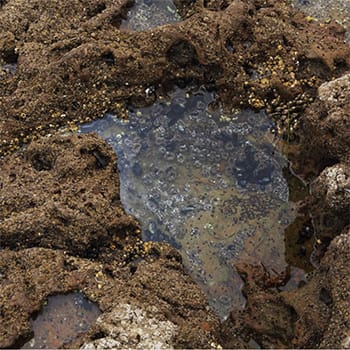
Marine Life Species to Look For
Tide pools are like tiny, vibrant ecosystems teeming with life. You might find all sorts of amazing creatures depending on the location and your luck:
Common Marine Life to See in Florida Tide Pools:
These fascinating residents are likely the first to greet you as you explore Florida’s tidal pools:
- Sea anemones: These colorful flower-like creatures sway gently in the current, using their stinging tentacles to capture tiny prey.
These are some of the most common creatures to find in tide pools and can survive for periods of time exposed to air, waiting for the tide to come back in and cover them up again.
- Tiny fish: Darting in and out of the rocks and seaweed, these miniature fish add a flash of movement to the tidal pools.
Sometimes they get stuck if the tide moves out and leaves them without water, but usually they don’t stay long in tidal pools, just long enough to hide from predators or look for food.
Fish larvae is also common to find in tidal pools.
- Snails: Different species of snails inhabit different shorelines, and these little creatures love tidal pools. And if they happen to get eaten by birds and their shells get left behind, you may see hermit crabs happily try it on to see if it fits!
- Shrimp: These translucent crustaceans can be surprisingly difficult to spot despite their abundance. Look for them flitting through the water column or hiding amongst the rocks.
- Starfish: These iconic echinoderms come in a variety of shapes and colors. Look for them clinging to the rocks or slowly making their way across the bottom of the pool.
- Sea urchins: These spiky creatures graze on algae and other organic matter. Be careful not to touch them, as their spines can inflict a painful sting.
- Brittle stars: These close relatives of starfish have long, thin arms that they use to crawl and scavenge for food. They are very good at camouflage.
- Nudibranchs (sea slugs): These brightly colored and often bizarre-looking sea slugs come in a wide variety of shapes and sizes. Look for them feeding on sponges and other small organisms.
Tip: Sargassum shrimp hitchhike ashore in Sargassum seaweed, as well as lots of other small marine creatures… so next time you see a clump of that brown seaweed washing up on shore, take a look at what’s inside! Like the tidal pool, It has its own little ecosystem of marine life inside!
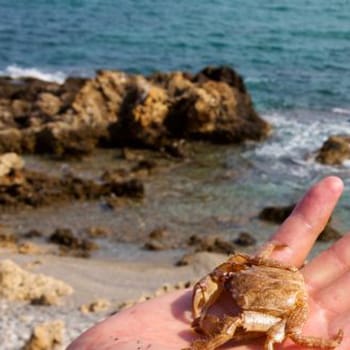
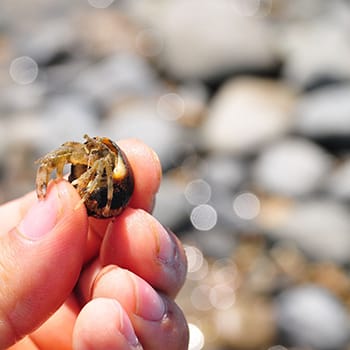
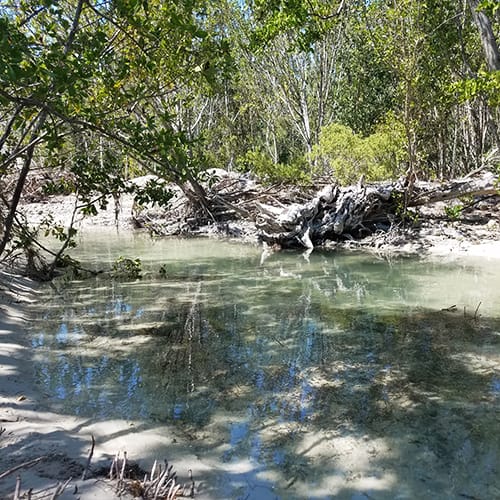
More Challenging Marine Life to Identify:
These tiny creatures might not be readily visible to the naked eye, but they play a vital role in the ecosystem:
- Plankton: The base of the food chain, these microscopic organisms include phytoplankton (plant-like plankton) and zooplankton (animal-like plankton) that drift in the water column.
- Copepods: Tiny crustaceans that are essential for the health of the tidal pool. They feed on phytoplankton and are eaten by larger fish and shrimp.
- Amphipods: Often called “sea fleas,” these small crustaceans hop around the tidal pools, feeding on algae and detritus (decaying organic matter).
- Mysids: Shrimp-like creatures that filter feed on plankton and other tiny particles from the water.
- Nematodes (roundworms): Microscopic worms found in most marine environments, including tidal pools. They feed on bacteria and other organic matter.
- Larvae of various creatures: Many fish, shrimp, crabs, and other marine animals spend their early life stages in the protected environment of tidal pools. These larvae are tiny and often transparent.
The exact mix of creatures will vary depending on the specific tidal pool and location. Different regions in Florida, most especially between Atlantic Ocean and Gulf Coast, will have different species.
FAQ
What are tide pools?
Tide pools are rocky depressions on the shore that are filled with seawater during high tide and left behind as the tide recedes.
Where can I find tide pools in Florida?
Tide pools can be found along the rocky shores of Florida’s Atlantic and Gulf coasts, particularly in areas with rocky outcroppings and jetties.
What kind of marine life can be found in Florida’s tide pools?
Florida’s tide pools are home to a variety of marine life, including crabs, snails, sea anemones, starfish, and small fish.
When is the best time to explore tide pools in Florida?
The best time to explore tide pools in Florida is during low tide, when the pools are exposed and the marine life is visible.
As an Amazon Associate I earn from qualifying purchases at no additional cost to you.
We think you may also like…
